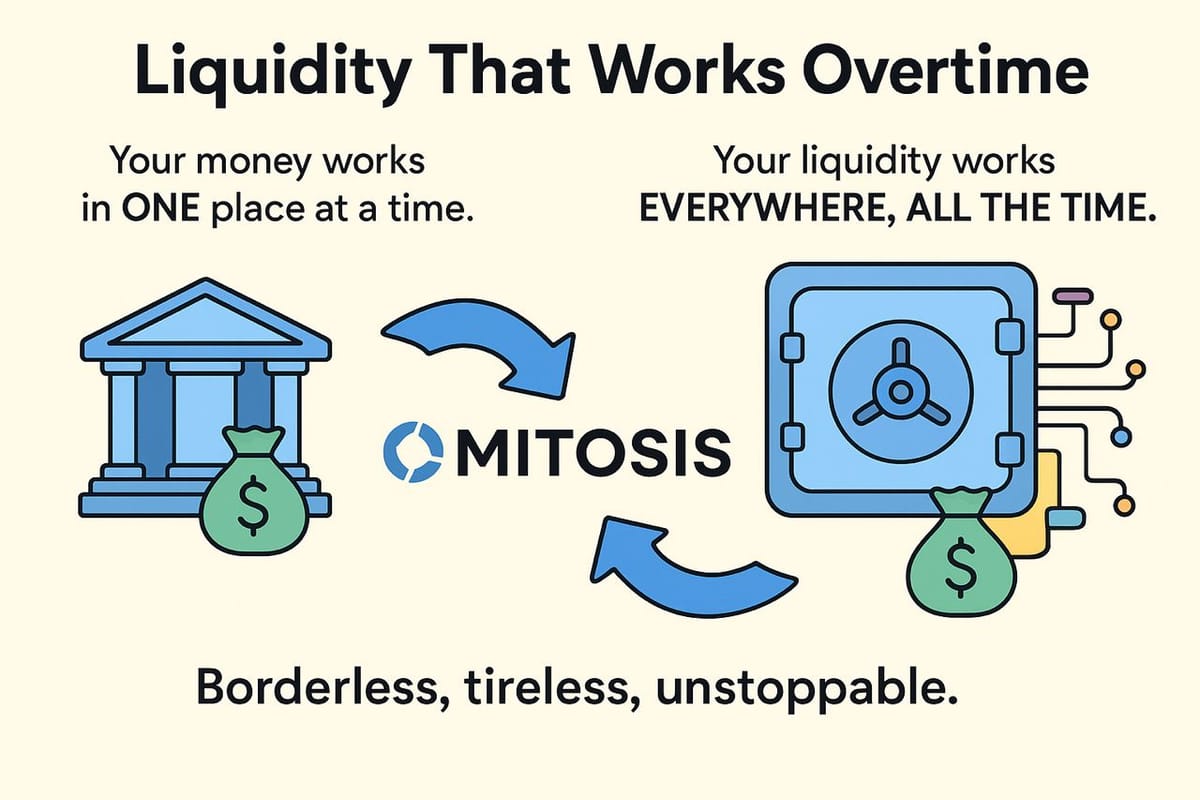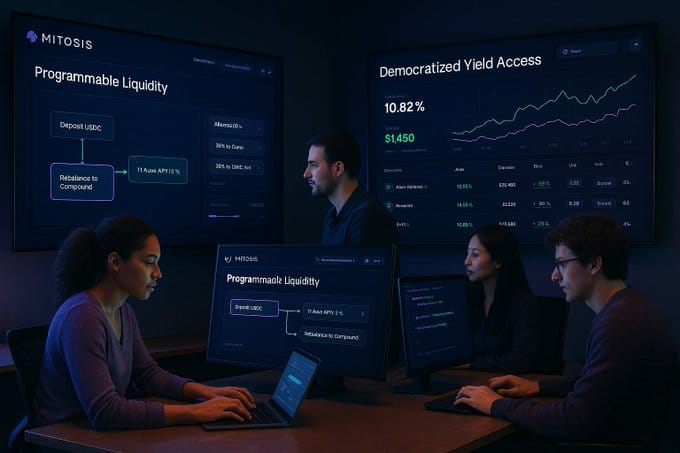How EOL Staking Breaks from the Yield Farm Mold

- Productive Yield, Not Subsidies
The big difference here? Where the rewards come from.
- In yield farming, rewards come from token emissions, essentially the protocol paying you with its own money. It looks good in the short term, but eventually the emissions dry up, the token price falls, and capital flees.
- With EOL staking, yield isn’t subsidized. It’s earned through actual activity:
- Fees from cross-chain transfers
- Rewards from restaking ETH into additional networks
- Ecosystem fees from projects that tap into Mitosis liquidity
That’s a fundamentally different game. Instead of draining treasuries, it creates a feedback loop where protocol growth fuels yield, which attracts more capital, which supports further growth.
- Diversified Risk Profile
Most farms expose you to single-protocol risk. If the token tanks or the contract gets exploited, you’re done.
EOL staking spreads exposure across:
- ETH as the base asset
- Multiple revenue streams (bridging, restaking, ecosystem fees)
- Different layers of the Mitosis ecosystem
This makes the risk profile feel less like betting on one farm and more like holding an index of Mitosis ecosystem growth. It’s still DeFi (and therefore risky), but it’s structured to avoid the usual fragility of “all eggs in one pool” farming.
- Utility-First, Rewards-Second
Most farms are built with one goal: TVL optics. High yields attract capital, and the protocol hopes to figure out “utility” later.
EOL flips the script. Its primary function is liquidity infrastructure:
- It makes cross-chain transfers seamless.
- It powers restaking integrations.
- It gives protocols within Mitosis a stable liquidity backbone.
The yield is a byproduct of that utility, not the other way around. That design philosophy self-selects for participants who aren’t just chasing APY but actually believe in the ecosystem. And that difference matters when you’re thinking about long-term sustainability.
Why This Matters for the Mitosis Ecosystem
Liquidity as Infrastructure
EOL pools don’t just sit idle, they actively fuel cross-chain operations. When demand for bridging rises, so does demand for EOL staking. This makes it countercyclical compared to speculative farms. In choppy markets, bridging activity often increases, helping stabilize yields.
Restaking and Security Flywheel
By plugging into restaking protocols, EOL stakers don’t just provide liquidity, they help secure emerging networks. This opens up:
- Multiple yield streams (ETH validation + restaking + ecosystem fees)
- Stronger ties between Mitosis and other ecosystems
- A security-based moat that farming-only protocols can’t match
It’s not just yield farming anymore, it’s yield plus network security as a service.
Revenue That Actually Scales
Because EOL pools tap into fee-driven revenue, they grow in proportion to real adoption. More cross-chain activity? More fees. More protocols integrating? More ecosystem revenue.
Unlike farming emissions, this model doesn’t get weaker as participation grows, it gets stronger. That’s a massive departure from the standard DeFi cycle.
The Risk Side of the Equation
Of course, none of this comes without risks. Let’s break them down:
- Technical Risks
- Smart contract exploits (always possible in DeFi).
- Bridge vulnerabilities (historically a big attack vector).
- Restaking integration risks (slashing conditions, validator issues).
- Economic Risks
- Yields depend on activity, a bear market slowdown could mean leaner returns.
- Heavy competition from other staking protocols like Lido, EigenLayer, and Rocket Pool.
- Execution Risks
- Mitosis must actually grow the ecosystem. If adoption lags, yields stagnate.
- Competing cross-chain solutions could erode Mitosis’s moat.
Bottom line: EOL is not a guaranteed yield machine. It’s an ecosystem bet wrapped in a staking token.
What This Means for Participants
So should you stake? It depends on your goals.
- If you want stable, predictable returns: plain ETH staking or Lido is safer.
- If you’re chasing high APY, short-term farming: EOL isn’t built for that either.
- If you believe in Mitosis long-term and want exposure to its growth: EOL staking is basically a way to align with that vision while still holding ETH exposure.
Think of it as venture-style participation in an ecosystem. It’s not a fixed-income play, it’s a conviction play.
Big Picture: Beyond the Farming Trap
EOL staking may not be the flashiest thing in DeFi, but that’s the point. It’s not built to win a short-term TVL arms race. It’s built to:
- Provide real infrastructure.
- Create yield that grows with actual usage.
- Attract participants who are aligned with the ecosystem, not just farming mercenaries.
If it succeeds, it could mark a real shift in how protocols think about “rewards.” If it fails, it will just reinforce skepticism that all staking is just farming in disguise.
But here’s the key: EOL isn’t asking you to bet on APY. It’s asking you to bet on the Mitosis ecosystem. And that’s a very different proposition than farming.
Final Thought
The real question isn’t whether EOL staking pays the best yield today, it’s whether it’s laying the foundation for competitive, sustainable yields tomorrow.
Early participants aren’t chasing quick emissions; they’re betting that utility-first staking models are the future of DeFi. If Mitosis can prove that thesis, EOL could be more than just another staking pool, it could be the blueprint for sustainable DeFi economics.



Comments ()